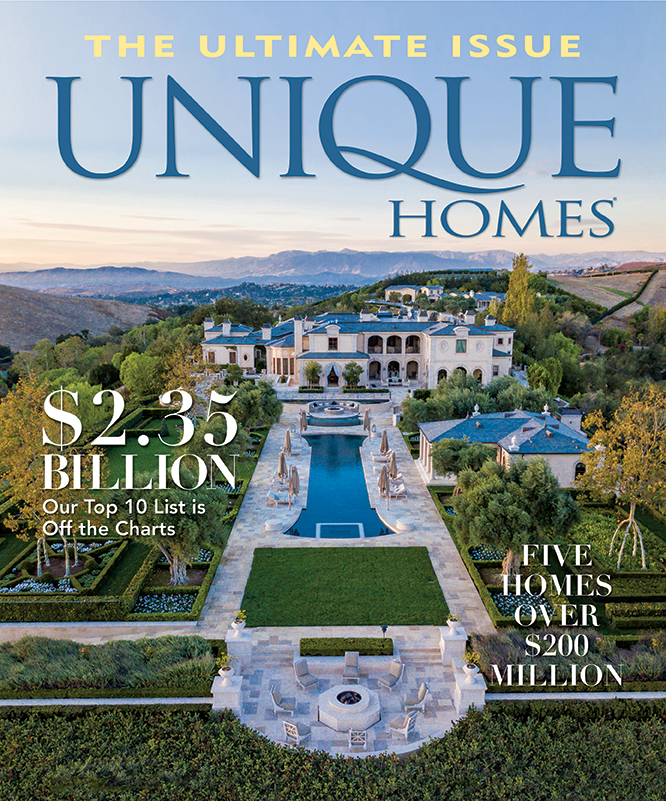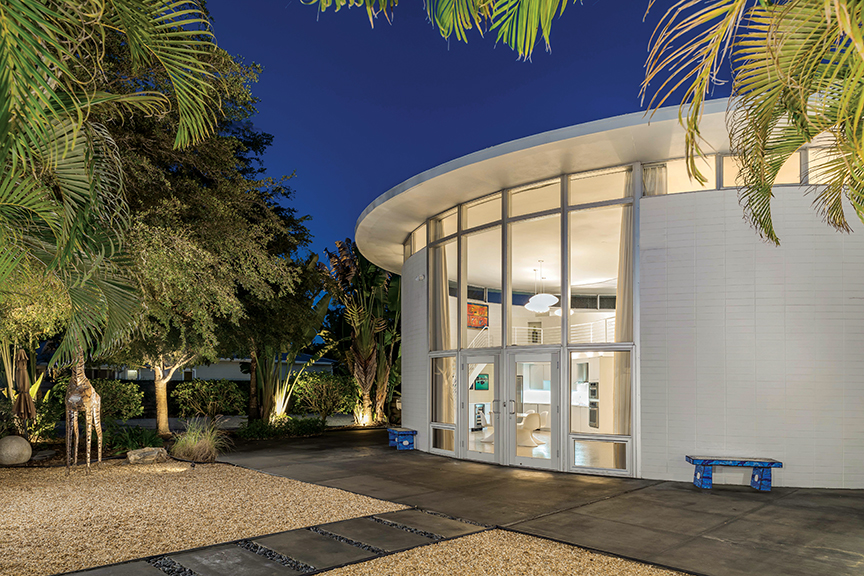
Photo by Rich Montalbano
Mid-Century Modern design came onto the scene before color television. But rather than appearing antiquated today, it inspires contemporary designers and homebuyers.
The popularity of Mid-Century Modern design continues to accelerate, confirmation that the masters who introduced the look in the ’40s and ’50s were visionary innovators. Decades later, the work of those architects, interior designers and furniture makers still appears fresh, and current expressions of modernism invariably build on the mid-century movement.
Sam Lubell, a leading authority on Mid-Century Modern design, whose books include Mid-Century Modern Travel Guide: West Coast USA and California Captured, believes the genre’s enduring appeal can be attributed to simple, elegant aesthetics, the success in reducing architecture to its most basic elements, and nostalgia. “Mid-Century Modern is a blend of technology, simplicity and a style that’s very ‘cool,’ for lack of a better word, enhancing people’s appreciation of it,” says Lubell. The writer suggests that vintage photographs from the era reveal how truly revolutionary Mid-Century Modern architects were. “Cars in the photos appear to have nothing to do with the houses. It’s hard to describe just how radical and ahead of their time they were,” he observes.
In the U.S., passions for Mid-Century Modern residential design burned first and most intensely in and around Los Angeles, responding to trends already underway in Europe, but not so elegantly applied to single-family residences. In a city where challenging established convention was not discouraged, disciples of Frank Lloyd Wright — pioneering architects Rudolph Schindler, Richard Neutra and John Lautner — transformed residential aesthetics and attitudes.
The genesis of Mid-Century Modernism may have occurred in the City of Angels, but today’s epicenter of the style is Palm Springs, the desert resort city 100 miles east of L.A. Practically the entire municipality is a living museum of mid-century design, and that signature aesthetic has become as much a tourist attraction as Palm Springs’ legendary golf, tennis and shopping.
Every February, the community celebrates its architectural legacy with Modernism Week, where architects, designers and collectors from around the world draw inspiration from home tours, seminars, film screenings, and receptions in famous settings that include not just residences, but Mid-Century Modern hotels and restaurants.
Lisa Vossler Smith, who served as a volunteer for Modernism Week when it debuted in 2006 and was named executive director five years ago, reports the 2018 edition drew 126,000 people from 15 countries, more than double the attendance in 2015. She has observed an ever-increasing commitment by local residents to embrace their city’s architectural heritage and believes Modernism Week has profoundly influenced preservation efforts in Palm Springs and beyond. “Our goal is to educate visitors, so they can take back what they’ve learned to their own communities,” says Vossler Smith, who actively supports similar events across the country.
Vossler Smith insists the fascination with Mid-Century Modern design is multigenerational, while conceding popular shows like Mad Men have contributed to the genre’s hip factor. “Clearly, there’s a sense of nostalgia for the baby boomer generation, but we find younger homebuyers are also attracted by the more simplistic, minimalistic lifestyle offered by these homes,” she says. “We’re now starting to explore new building projects informed by the mid-century design period,” says Modernism Week’s executive director, noting the influence of trailblazers such as Neutra and Schindler is evident in contemporary modern architecture.
While Vossler Smith admits Mid-Century Modernism is ideally suited to Southern California, she reports outstanding examples from the era are plentiful in places like Denver, Phoenix and Chicago. In Denver, real estate broker Adrian Kinney is a local expert on Mid-Century Modern homes, and his personal renovation of a Cliff May-designed residence reinforced his enthusiasm for quality design from that period. Finding some modernism too austere, Kinney was delighted to discover the warmth that many mid-century architects, like May, brought to their craft. “The more I learned, the more I wanted to educate everyone about what this modernism thing was all about!,” says the real estate professional.
“Buyers of Mid-Century Modern properties range from boomers to millennials, all wanting something different, functional and livable, with a sense of character,” says Kinney, who co-founded Denver’s own Modernism Show to draw attention to the Mile High City’s architectural assets. “After attending Palm Springs’ Modernism Week many times, I knew Denver needed to have one,” he says. Identifying more than 6,000 Mid-Century Modern homes in metro Denver, Kinney declares, “I want to showcase these to the world.”
Best known for its sugar-white beaches, the Gulf Coast city of Sarasota, Florida, shares a rich Mid-Century Modern heritage. Local broker Martie Lieberman of Premier Sotheby’s International Realty is recognized by both the real estate and architectural communities as an authority on the “Sarasota School of Architecture.”
Lieberman, who co-founded the Sarasota Architectural Foundation, is passionate about Mid-Century Modern homes and has made the sale of those properties her specialty. Observing that many houses from the Sarasota School elicit a sense of delight at first glance, she suggests the interiors are equally impactful. “You’ll see some of the most sophisticated uses of space and light, which most people have never experienced,” she insists.
Architects like Paul Rudolph and Victor Lundy created low-slung, glass-ensconced homes that were a dramatic departure from the prevailing Mediterranean style, explains Lieberman, noting they attracted idealistic young designers to Sarasota in the ’50s and ’60s. “They thought they would change the world with their new ideas, new materials and a new architecture,” she says. According to the niche broker, newcomers to Sarasota are quickly won over by the community’s architectural legacy, and Lieberman reports that significant Mid-Century Modern homes can command premiums of 15 to 35 percent.
A prefabricated home designed by legendary Mid-Century architect Cliff May, erected in 1955 in Denver.
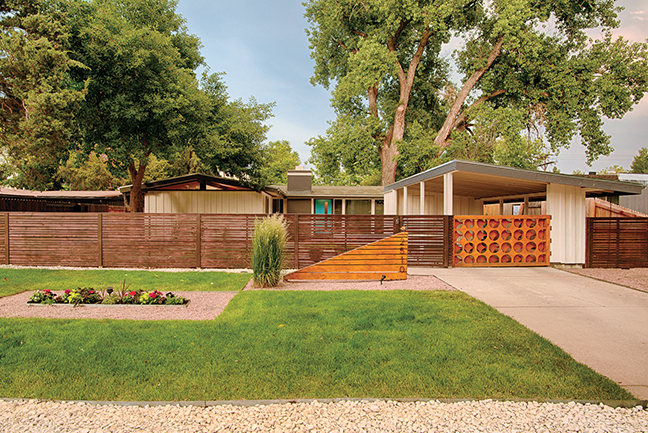
Real estate broker Adrian Kinney restored this 1955 Cliff May property in Denver, fueling his passion for mid-century design.
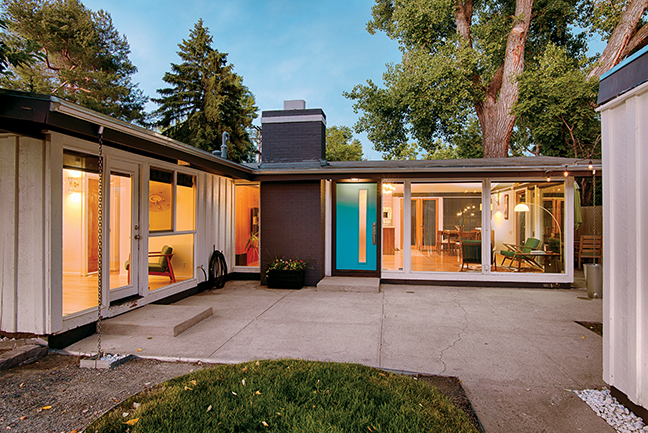
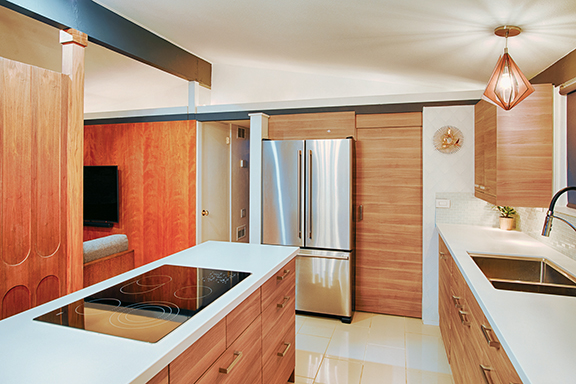
Photos by Atom Stevens
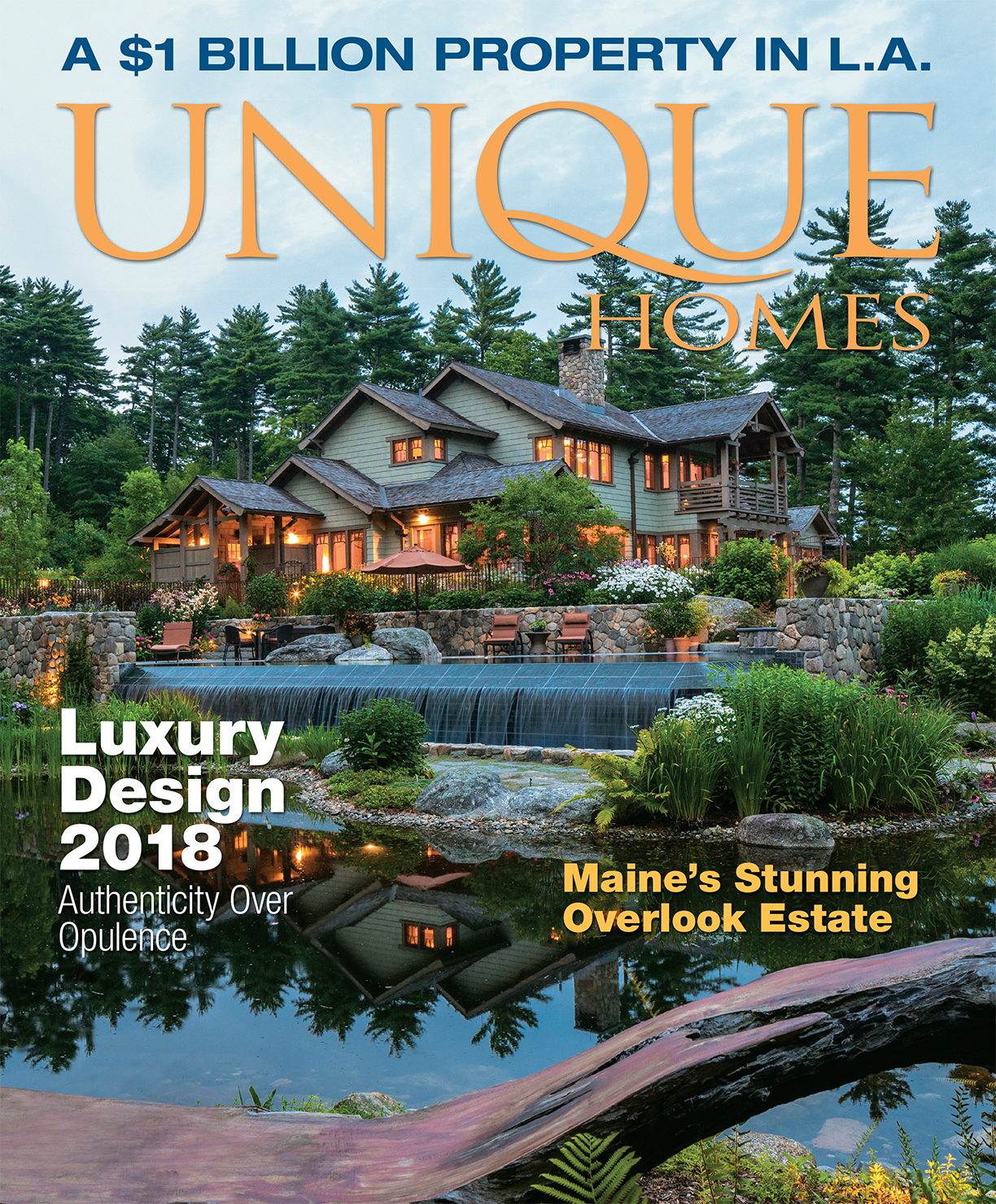
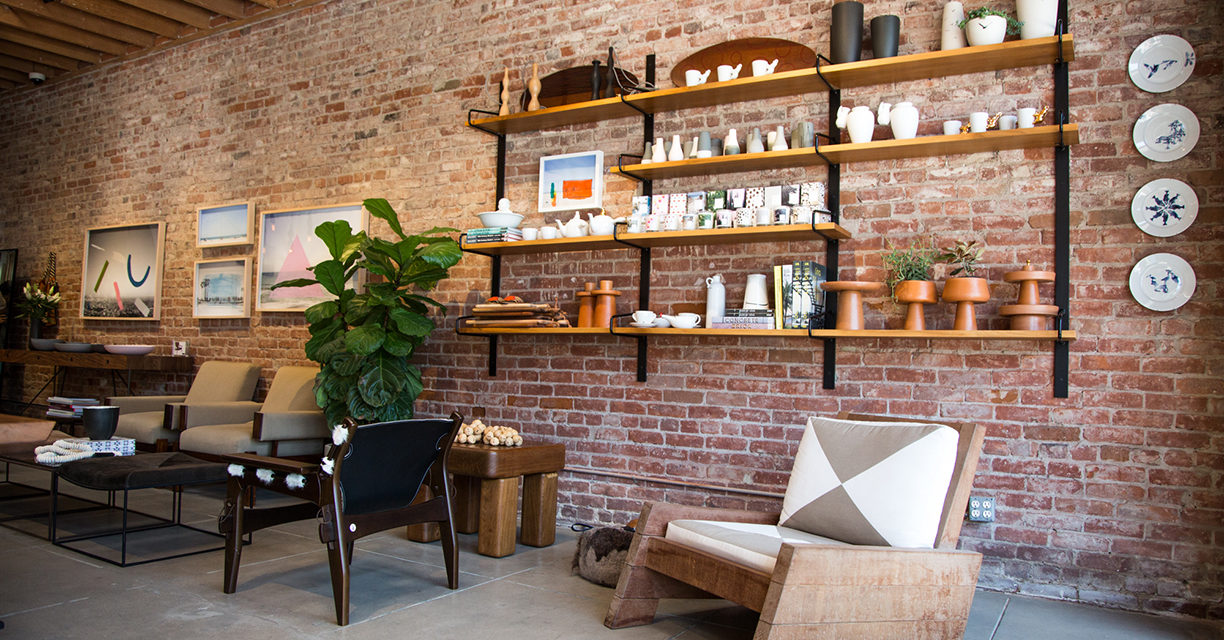
Demand for Mid-Century Modern furniture continues to be strong, but while Scandinavia steals the spotlight, savvy collectors are heading south — to Brazil.
By Roger Grody
With its sexy, timeless aesthetic, Mid-Century Modern design, whether architecture or home furnishings, has been hot for decades. Pieces from Europe and the U.S. dominate the market, but some incredible work from Brazilian designers has gone relatively unnoticed. The world is discovering that Oscar Niemeyer, Brazil’s most famous modernist, had plenty of company.
“I believe the mix of cultures that make Brazil — we are, after all, a country built by immigrants — give us a particular charm, a natural flair,” says Carlos Junqueira, founder and president of Espasso. A preeminent source for Mid-Century Modern Brazilian art, furniture and accessories, the New York-based gallery has branches in Miami and London. “With globalization, Brazilian designers have begun developing a strong design identity,” says Junqueira, explaining that the appeal of the genre transcends borders and cultures.
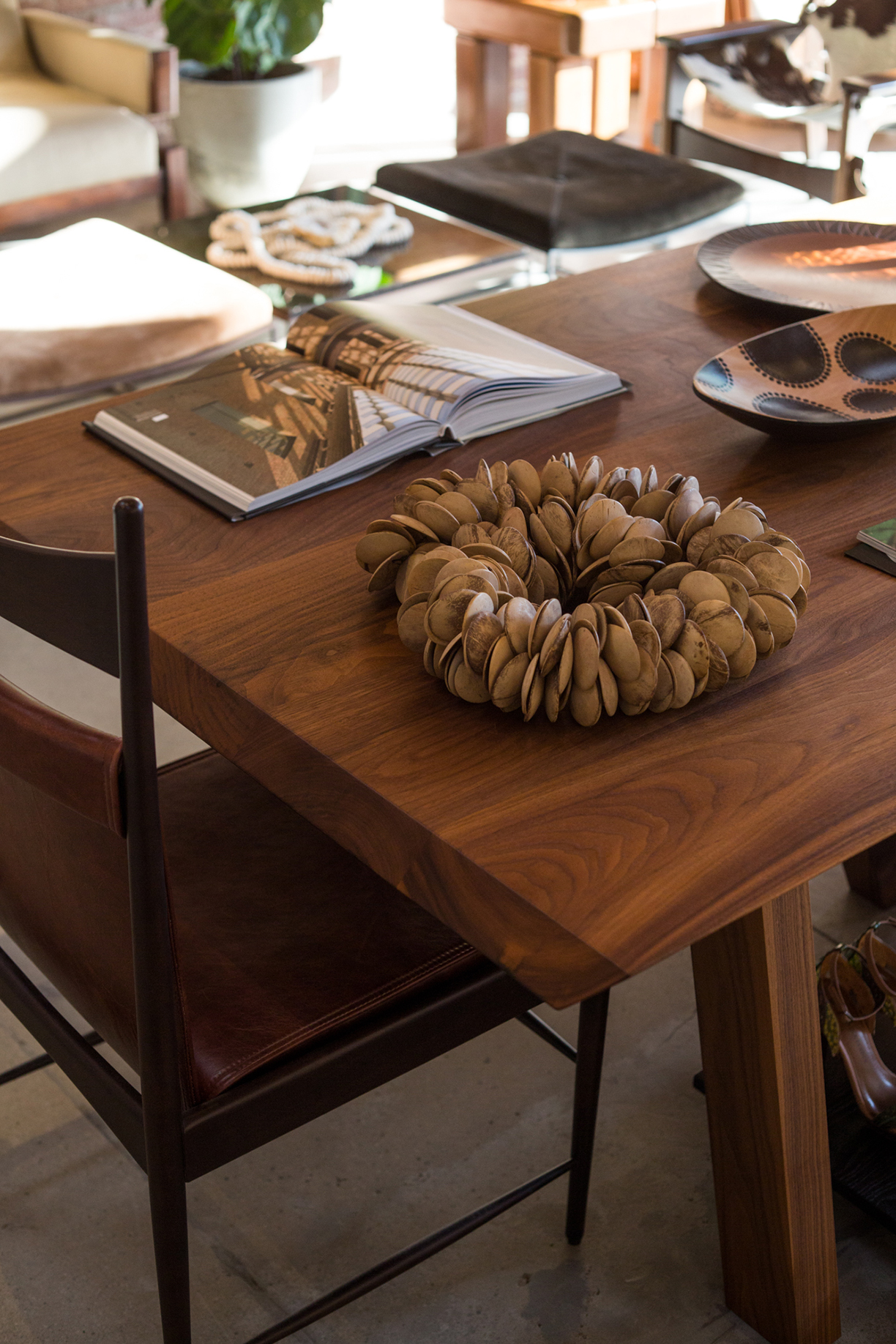
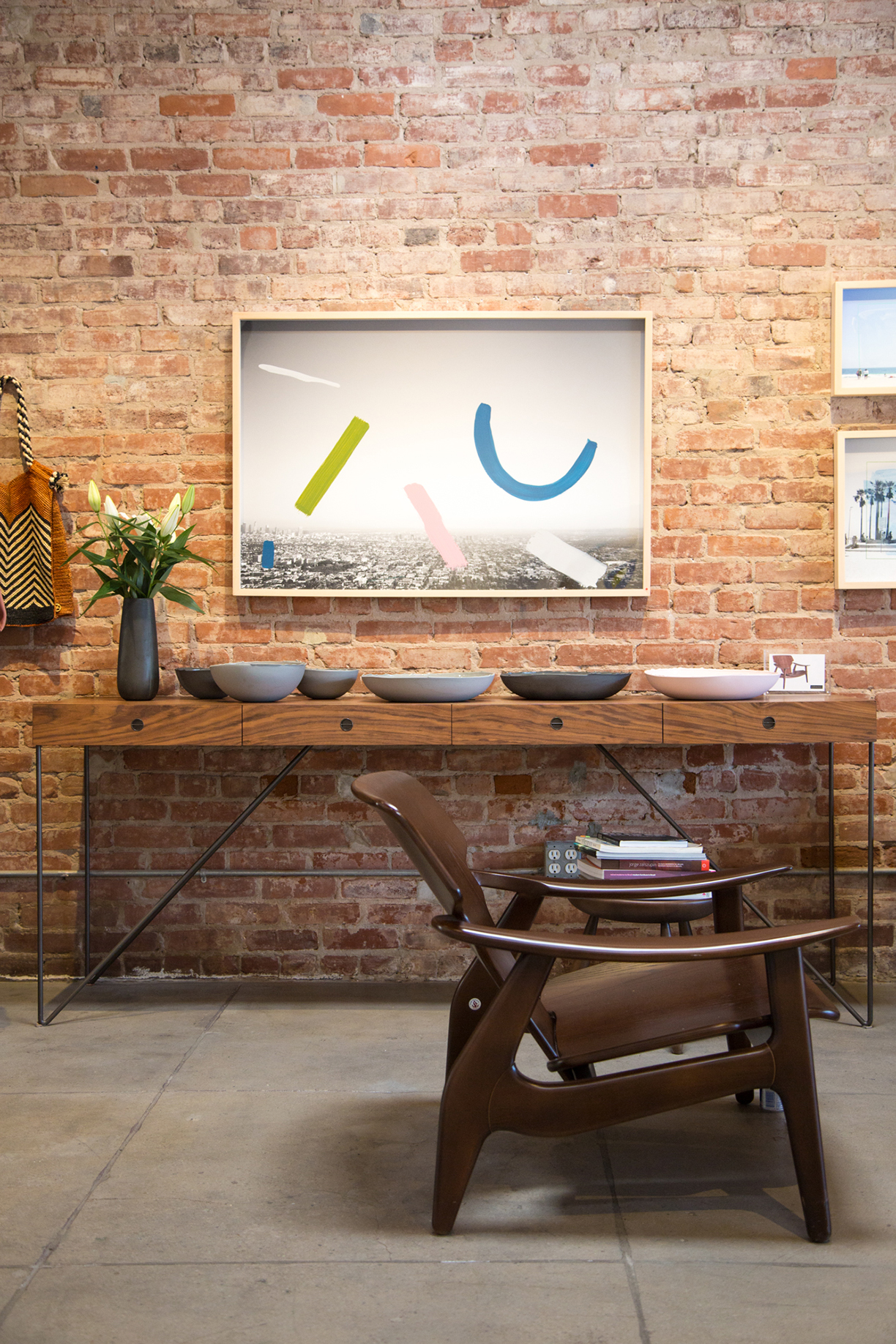
The Dinamarquesa armchair was designed by Polish-born Jorge Zalszupin, one of the Brazilians that comprised a robust creative community in the South American nation after World War II. When Niemeyer was designing Brazil’s new national capital of Brasilia, he recruited Zalszupin to create furniture for the futuristic governmental complex.
Featuring leather cushions supported by a sleek, delicate frame of imbuia (a Brazilian wood resembling walnut), the 1959 chair reflects the Mid-Century Modern aesthetic that was sweeping the globe and, in fact, Dinamarquesa means “Danish” in Portuguese. When viewing these timeless pieces of Brazilian furniture, it is easy to forget that some of them were designed more than 60 years ago.
The Asturias rocking chair is personally handcrafted from sustainable materials by São Paulo designer Carlos Motta. It is a study in simplicity but a dramatic and formidable piece of furniture, with bold red-and-olive cushions embedded in a solid, planked frame. Through its use of reclaimed itauba-preta wood and minimal machine cuts to reduce its environmental impact, this indoor-outdoor chair has been lauded for both design and sustainability.
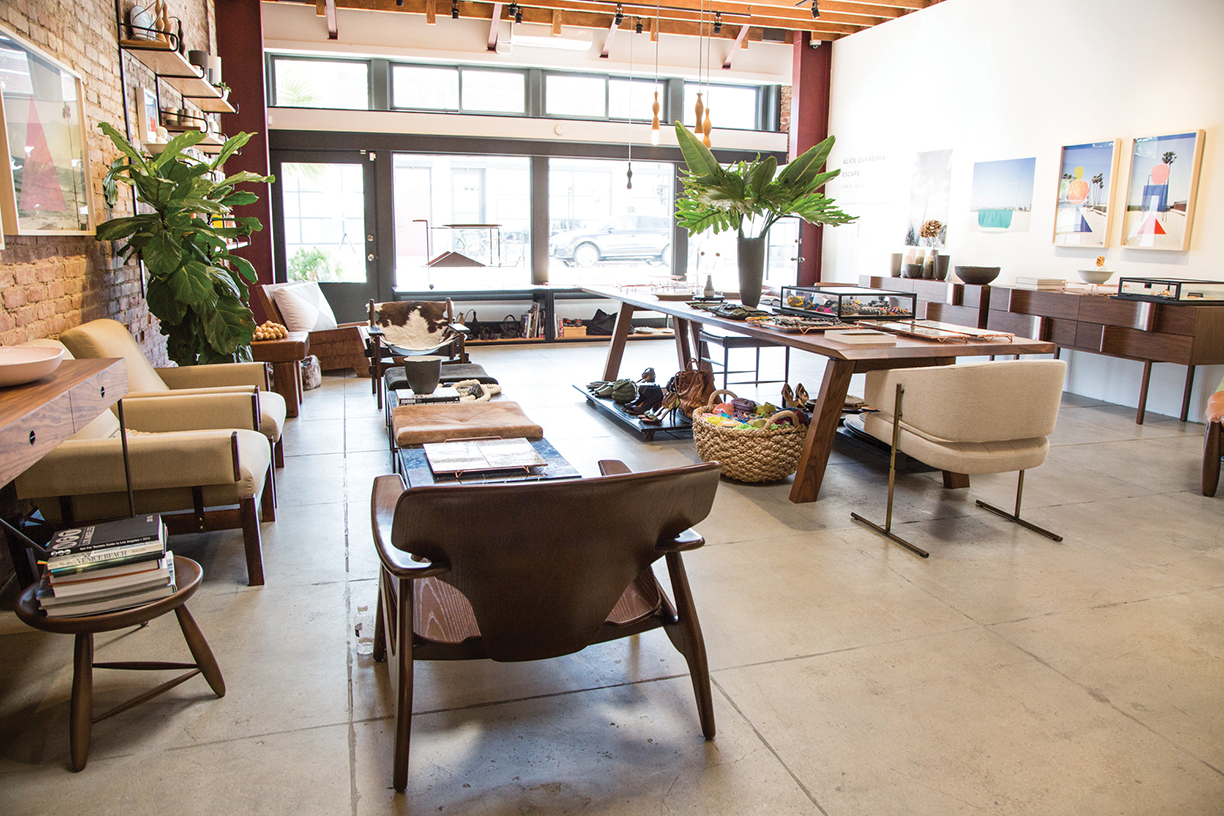
From contemporary São Paulo-based architect Arthur Casas is the Ondas sideboard, which features a unique rippled edge. Crafted from American walnut, this piece is a departure from the clean, angular features that characterized the structures Casas designed earlier in his career.
On a quiet stretch of Pacific Avenue in Los Angeles’ once-bohemian, now-trendy neighborhood of Venice is Le Magazyn, where founder Ana Kozak celebrates design of all kinds from her native Brazil. In addition to shoes, jewelry and art is a collection of Mid-Century furniture designed by some of her country’s great modernists.
Kozak, who moved with her family from São Paulo to L.A. seven years ago, has transformed a 1,000-square-foot storefront into a combination furniture showroom, fashion boutique and exhibition space. Pendant lamps from São Paulo’s Estudio Manus hang from exposed beams while merchandise is displayed on a walnut table designed by Brazilian modernist Claudia Moreira.
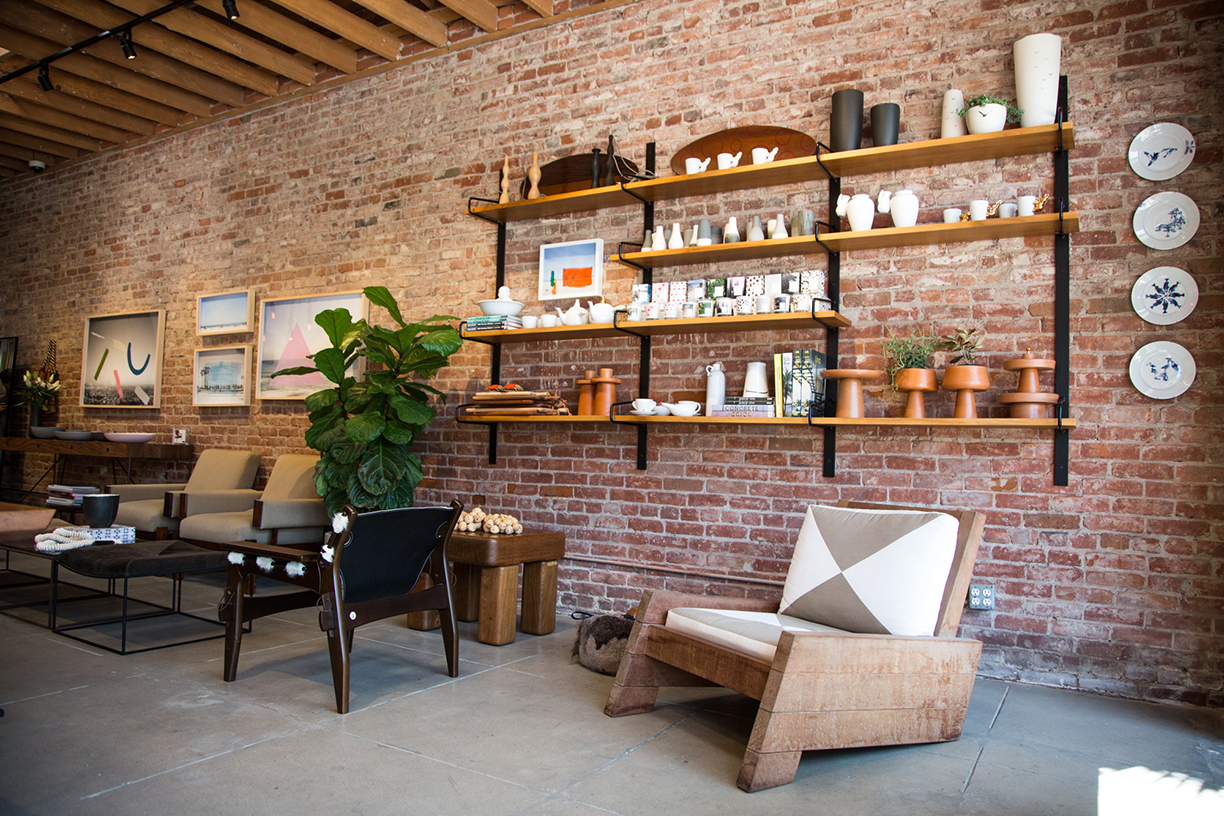
Because Le Magazyn is Espasso’s representative on the West Coast, Kozak is able to fill her intimate showroom with a selection of pieces that intrigue the professional designers, local homeowners and tourists who drop by her store. “For many years the reference point for this era of furniture was Denmark, but now people searching for something new and different are discovering Brazilian Mid-Century,” says Kozak.
Le Magazyn’s walls are lined with photos from the widely published Brazilian photographer Claudio Edinger, whose aerials of a smoggy São Paulo skyline are hauntingly alluring. The work of architect/photographer Leonardo Finotti, another Brazilian fascinated by urban aerial shots, is offered through Espasso.
Atlanta interior designer Perry Walter discovered Brazilian Mid-Century Modern furniture when he was searching for a compelling coffee table for a client. While that commission involved a modern townhouse, Walter believes these Brazilian pieces can also be effective in more traditional settings.
“I think each piece is unique and can be displayed like a work of art,” says the designer, who appreciates how the style’s minimalism is warmed through the use of exotic woods and organic forms.
“The value of Brazilian furniture has been growing considerably as its recognition and desirability increases,” reports Espasso’s Junqueira, who notes that as prices rise knockoffs naturally emerge. “I’m extra-careful and attentive to every single detail related to the work I represent and the vintage selection I offer,” says the gallery founder, pleased to see Brazilian design internationally relevant and appreciated.
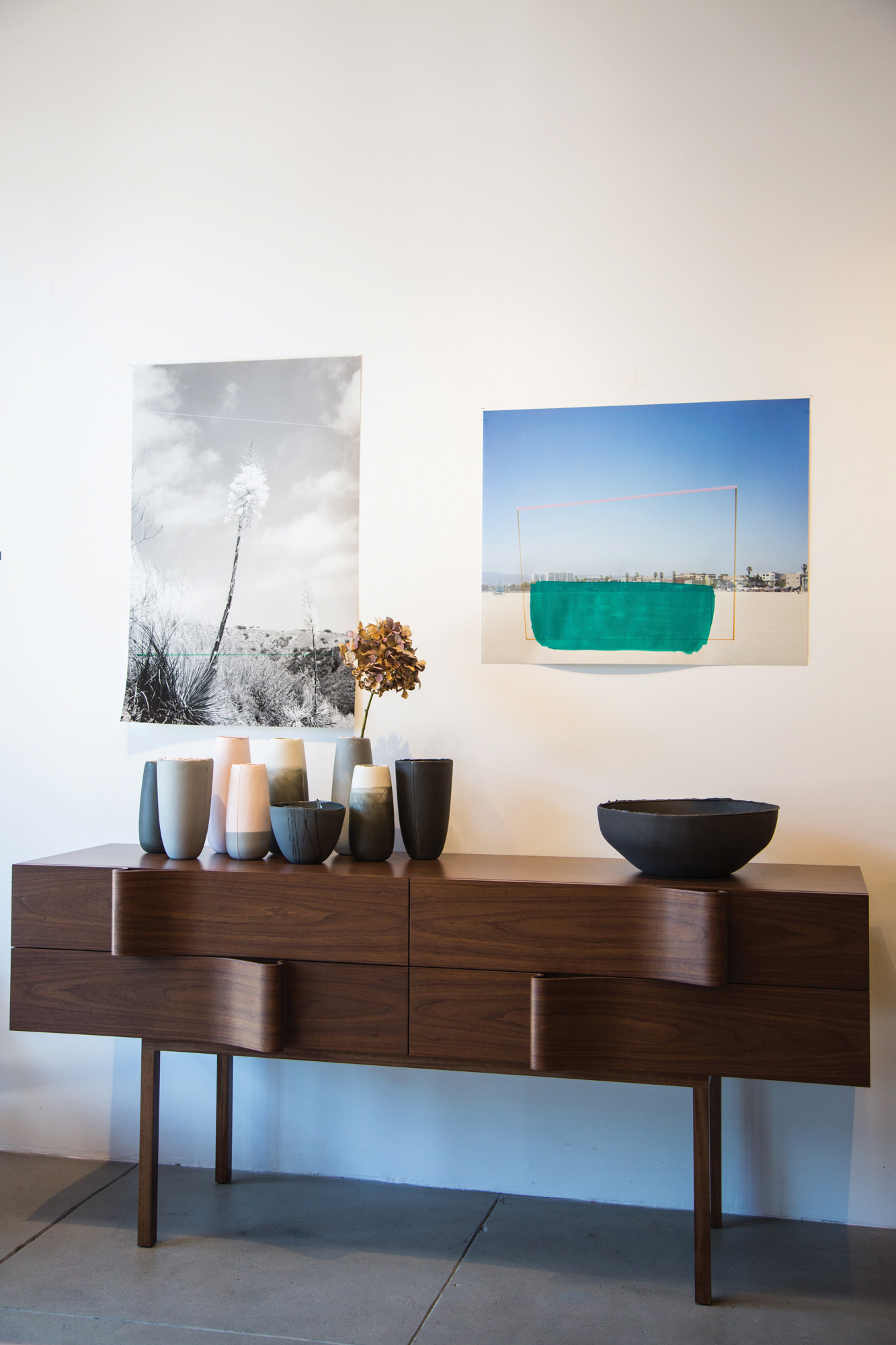
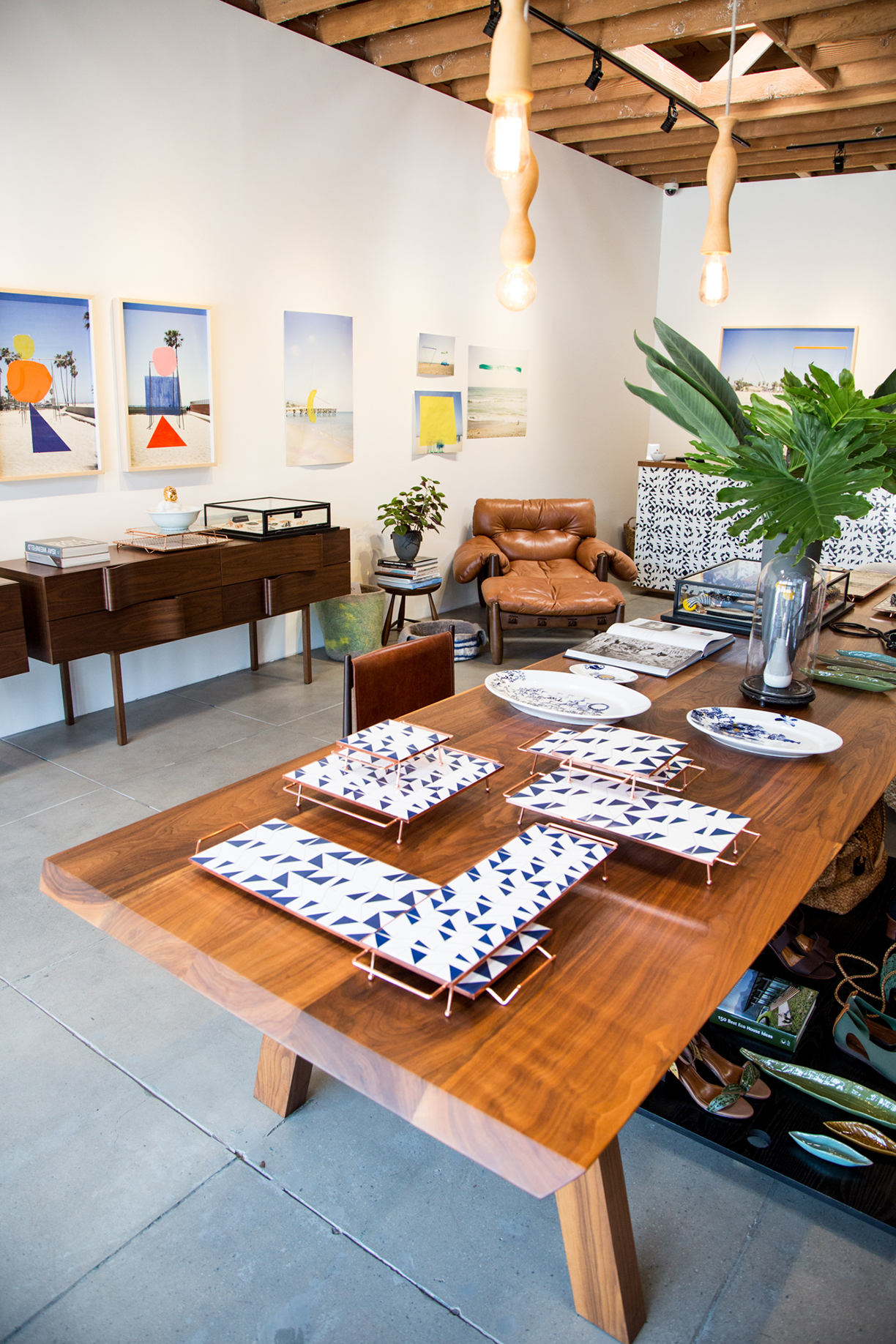
Photos courtesy of le magazyn


